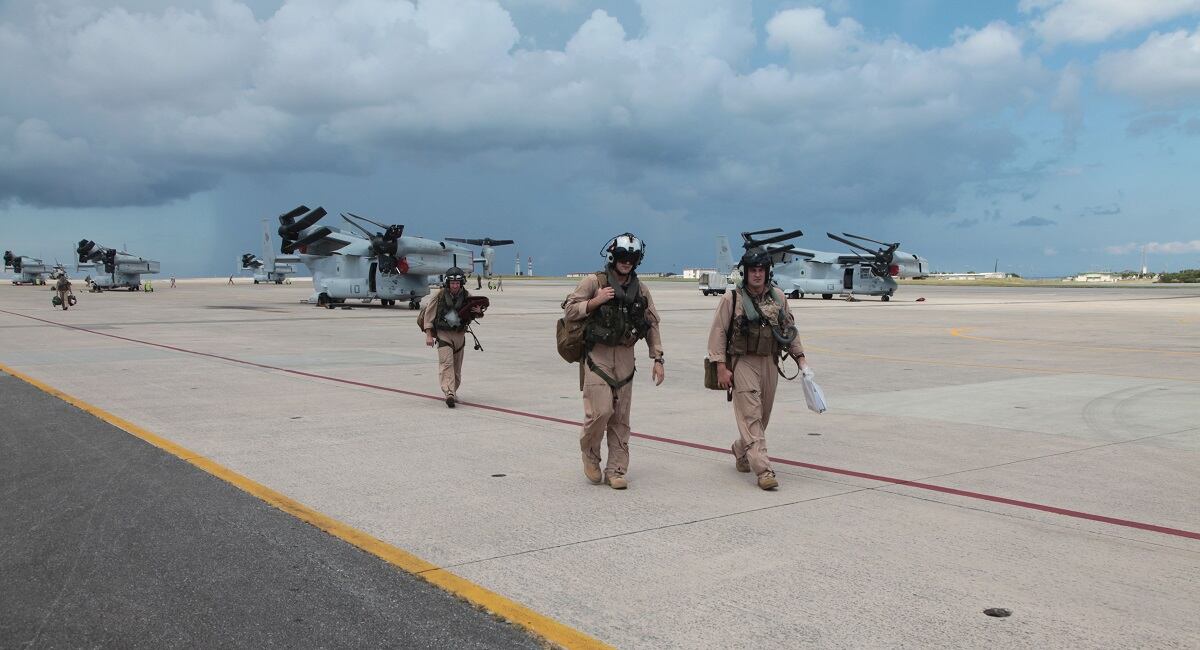Japan’s Supreme Court on Monday dismissed Okinawa’s rejection of a central government plan to build U.S. Marine Corps runways on the island and ordered the prefecture to approve it despite protests by locals who oppose the American troops’ presence.
Monday’s ruling upheld a high court ruling in March that the central government’s plan and its instruction for Okinawa’s approval are valid. It will move forward the suspended construction at a time Okinawa’s strategic role is seen increasingly important for the Japan-U.S. military alliance in the face of growing tensions with China.
Japan’s central government began the reclamation work at the Henoko area on the eastern coast of Okinawa, Japan’s main island in 2018 to pave the way for the relocation of the Marine Corps Futenma air station from a crowded neighborhood on the island.
The government later found out about 70% of the reclamation site is on soft ground, and submitted a revision to the original plan with additional land improvement. The Okinawa. Japan, prefectural government rejected the revision as insufficient and suspended the reclamation work.
RELATED

The ground improvement plan requires tens of thousands of pillars and massive amounts of soil, which opponents say would damage the environment.
Okinawa, Japan, Gov. Denny Tamaki has called for a significant reduction of the U.S. military on the island, the immediate closure of the Futenma base and the scrapping of the base construction in Henoko.
Tamaki said said he will not back down and continue with the demands despite the ruling. The Okinawa government will carefully examine the ruing to decide on a next step, he added.
“The ruling is extremely disappointing because we had expected a fair and neutral judgement based on respect for the local government autonomy,” Tamaki told a news conference. The ruling nullifies an independent municipal decision and could even disregard their constitutional right to local autonomy, Tamaki said. “It deeply concerns me.”
The Japanese and U.S. governments initially agreed in 1996 to close the Futenma air station, a year after the rape of a schoolgirl by three U.S. military personnel led to a massive anti-base movement. But persistent protests and lawsuits between Okinawa, Japan, and Tokyo have held up the plan for nearly 30 years.
Tokyo and Washington say the relocation within Okinawa, Japan, instead of moving it elsewhere as demanded by many Okinawans, is the only solution.
Okinawa, Japan, which accounts for only 0.6% of Japanese land, is burdened with the majority of the 50,000 American troops based in the country under a bilateral security pact, and 70% of U.S. military facilities are in Okinawa.
The Japanese government in recent years has increasingly stepped up its own defenses to deal with China’s growing assertiveness, triggering fear among Okinawan residents that they will be the first to be embroiled in a potential conflict.
Chief Cabinet Secretary Hirokazu Matsuno welcomed the ruling and said the government hopes to achieve the complete reversion to Japan of the Futenma airfield and relieve Okinawa of the burden of shouldering U.S. military bases while providing a thorough explanation to the local community.





